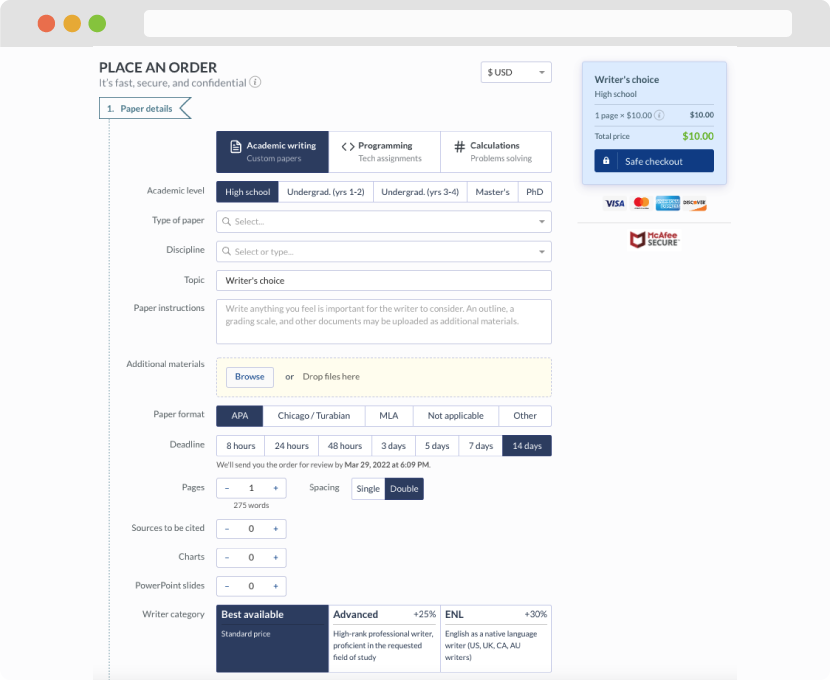1) What are the 6 questions to determine when behavior is abnormal?
2)What is the DSM-5?
3)Describe the different types of phobias.
4)What is Obsessive-Compulsive Disorder?
5)Explain the difference between Major Depressive Disorder and Bipolar Disorder.
6)Define Schizophrenia.
7)Explain the 2 different types of delusions that people with schizophrenia can have.
8)What is a Somatic Symptom Disorder?
Don’t be too wordy and boring. Be direct, specific, precise, and have concrete explanations.
12.1: Defining Psychological Disorders
The behavior might be considered abnormal if it differs radically from what is considered normal in the person’s own culture, if it leads to personal distress or impaired functioning, or if it results in the person’s being a danger to self and/or others.
Clinicians use the DSM-5 to classify and keep track of psychological disorders. It includes diagnostic criteria for about 300 psychological disorders. They are organized into several major categories. Tracking studies show that psychological disorders are more prevalent than physical diseases. Nearly half of people are diagnosed with some kind of psychological disorder during their lifetimes. The two most prevalent categories are anxiety and mood disorders.
Five theoretical perspectives on the causes of psychological disorders are the biological perspective, the biopsychosocial perspective, the psychodynamic perspective, the learning perspective, and the cognitive perspective. The biological perspective emphasizes genetics and other physiological factors. The biopsychosocial focus on interactions among biological, psychological, and social factors. Learning theorists explain psychological disorders as the result of experiences, whereas the cognitive perspective focuses on faulty thinking. The psychodynamic perspective is based on Freud’s psychoanalytic theory and emphasizes unconscious processes.
12.2: Anxiety Disorders
People who have panic attacks respond to ordinary changes in the body as though they were life-threatening. The symptoms of panic attacks include intense fear, a rapidly beating heart, and other signs of physiological distress. Repeated panic attacks can lead to agoraphobia, the fear of being in places from which escape is difficult. Panic disorder occurs when panic attacks are so frequent that they interfere with a person’s social, occupational, and/or academic functioning.
Generalized anxiety disorder (GAD) involves chronic, excessive worry. Social anxiety disorder (social phobia) arises out of the fear of embarrassment, whereas specific phobias represent irrational fear responses to objects or situations. The Big Five personality traits contribute to the development of GAD and phobias. People who are high in the trait of neuroticism are more likely to develop them.
Obsessive-compulsive disorder is characterized by recurrent obsessions (persistent, involuntary thoughts, images, or impulses that cause great distress) and/or compulsions (persistent, irresistible, irrational urges to perform an act or ritual repeatedly). Early infections and a tendency to exhibit exaggerated responses to stimuli that are universally undesirable contribute to the development of the obsessive-compulsive disorder.
12.3: Depressive and Bipolar Disorders
A major depressive disorder is characterized by feelings of great sadness, despair, and hopelessness, as well as a loss of the ability to feel pleasure. Other symptoms include psychomotor disturbance and, possibly, psychotic depression.
Bipolar disorder is a mood disorder in which a person has manic episodes (periods of wild optimism, inflated self-esteem, excessive euphoria, and hyperactivity) that alternate with periods of major depression.
Risk factors for depressive and bipolar disorders include (1) a genetic predisposition; (2) disturbances in the brain’s serotonin levels; (3) abnormal patterns in the neurotransmitters dopamine, GABA, and norepinephrine; (4) the personality trait of neuroticism; and (5) major life stress.
Depression, depressive and bipolar disorders, schizophrenia, and substance abuse are major risk factors for suicide. Other risk factors include particularly troubling life stressors and a genetic tendency to suicidal behavior. Elderly White males commit suicide more often than members of other races or age groups, perhaps because of poor health or loneliness. Research shows that women are more likely to attempt suicide, but men are more likely to be successful.
12.4: Schizophrenia
The positive symptoms of people with schizophrenia are abnormal behaviors and characteristics, including hallucinations, delusions, derailment, grossly disorganized behavior, and inappropriate affect. The negative symptoms of schizophrenia represent loss of or deficiencies in thoughts and behavior that are characteristic of normal functioning. They include social withdrawal, apathy, loss of motivation, lack of goal-directed activity, very limited speech, slowed movements, flat affect, poor problem-solving abilities, a distorted sense of time, and poor hygiene and grooming.
Theorists propose that schizophrenia arises from an interaction of constitutional vulnerability and external factors. Constitutional vulnerability includes heredity and prenatal risks, such as exposure to teratogens. Stress is an important external factor. Neuromaturational development is also believed to contribute to the finding that schizophrenia usually appears in the late adolescent or early adult years.
12.5: Somatic Symptom, Dissociative, Gender, and Personality Disorders
Somatic symptom disorders involve physical symptoms that cannot be identified as any of the known medical conditions. Some people with somatic symptom disorders have a persistent fear that bodily symptoms are the sign of some serious disease, and conversion disorder involves a loss of motor or sensory functioning in some part of the body, which has no physical cause but does solve a psychological problem.
Dissociative disorders cause people to lose the ability to consciously integrate their identities in some important way. People with dissociative amnesia have a complete or partial loss of the ability to recall personal information or identify past experiences. In a dissociative fugue, people forget their entire identity, travel away from home, and may assume a new identity somewhere else. In dissociative identity disorder, two or more distinct, unique personalities exist in the same person, and there is severe memory disruption concerning personal information about the other personalities.
Sexual dysfunction is a problem with sexual desire, sexual arousal, or the pleasure associated with sex or orgasm. Paraphilias are disorders in which people have recurrent sexual urges, fantasies, and behaviors that involve children, other nonconsenting persons, nonhuman objects, or the suffering and humiliation of the individual or his/her partner.
People with personality disorders have long-standing, inflexible, maladaptive patterns of behavior that cause problems in their social relationships and at work.
Professional homework help features
Our Experience
However the complexity of your assignment, we have the right professionals to carry out your specific task. ACME homework is a company that does homework help writing services for students who need homework help. We only hire super-skilled academic experts to write your projects. Our years of experience allows us to provide students with homework writing, editing & proofreading services.
Free Features
Free revision policy
$10Free bibliography & reference
$8Free title page
$8Free formatting
$8How our professional homework help writing services work

You first have to fill in an order form. In case you need any clarifications regarding the form, feel free to reach out for further guidance. To fill in the form, include basic informaion regarding your order that is topic, subject, number of pages required as well as any other relevant information that will be of help.
Complete the order form
Once we have all the information and instructions that we need, we select the most suitable writer for your assignment. While everything seems to be clear, the writer, who has complete knowledge of the subject, may need clarification from you. It is at that point that you would receive a call or email from us.
Writer’s assignment
As soon as the writer has finished, it will be delivered both to the website and to your email address so that you will not miss it. If your deadline is close at hand, we will place a call to you to make sure that you receive the paper on time.
Completing the order and download